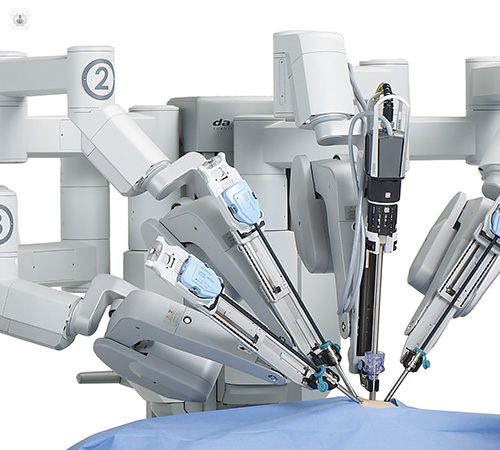Robotic cystectomy: how is it performed
Autore:In the advanced stages of bladder cancer, the best treatment option may be the removal of the bladder. This procedure is called a cystectomy and nowadays it can be performed with the assistance of a robotic console. Highly esteemed consultant urological surgeon Mr Pavlos Pavlakis, who treats patients in London, offers more insight into the procedure in his latest article.

What is a robotic cystectomy?
Robotic cystectomy is an operation to remove the bladder. This operation is a difficult operation, however, as we are able to do this in a minimally invasive manner using the robot, we minimise the surgical stress. This benefits patients enormously. It might also involve the removal of the surrounding pelvic lymph nodes. Bladder removal in men also includes the prostate and seminal vesicles, the two small glands that store and produce the majority of the fluid that makes up semen. In women, however, bladder removal also includes the uterus the ovaries, and the top of the vagina.
How is a robotic cystectomy preformed?
The procedure is performed under general anaesthesia so that you don’t experience any pain. The surgery isn’t undertaken by the robot, rather the surgeon uses a robotic console for movements that are more controlled and precise. The robotic has several arms, which enter the abdomen through small incisions. One arm holds a high-resolution 3D camera, whilst the other arm can hold instruments, which the surgeon will control to remove the bladder.
How long does a robotic cystectomy take?
The median length of stay for this operation is around four or five days compared to a longer length of stay if it is done with an open incision.
When is robotic cystectomy recommended?
Bladder removal surgery is recommended when there is advanced or muscle-invasive bladder cancer, or a high-risk of bladder cancer.
How do you pass urine after a robotic cystectomy?
Following the removal of the bladder, the surgeon must create a new way for the urine to leave the body. This is called urinary diversion and is done in two different ways, with an ileal conduit diversion or a neobladder. Both diversions that are made from a piece of the bowel which is selected and separated
Mr Pavlos Pavlakis is a respected consultant urological surgeon, who treats patients in Southend-on-Sea. If you would like to book a consultation with him, you can do so by visiting his Top Doctors profile today.


